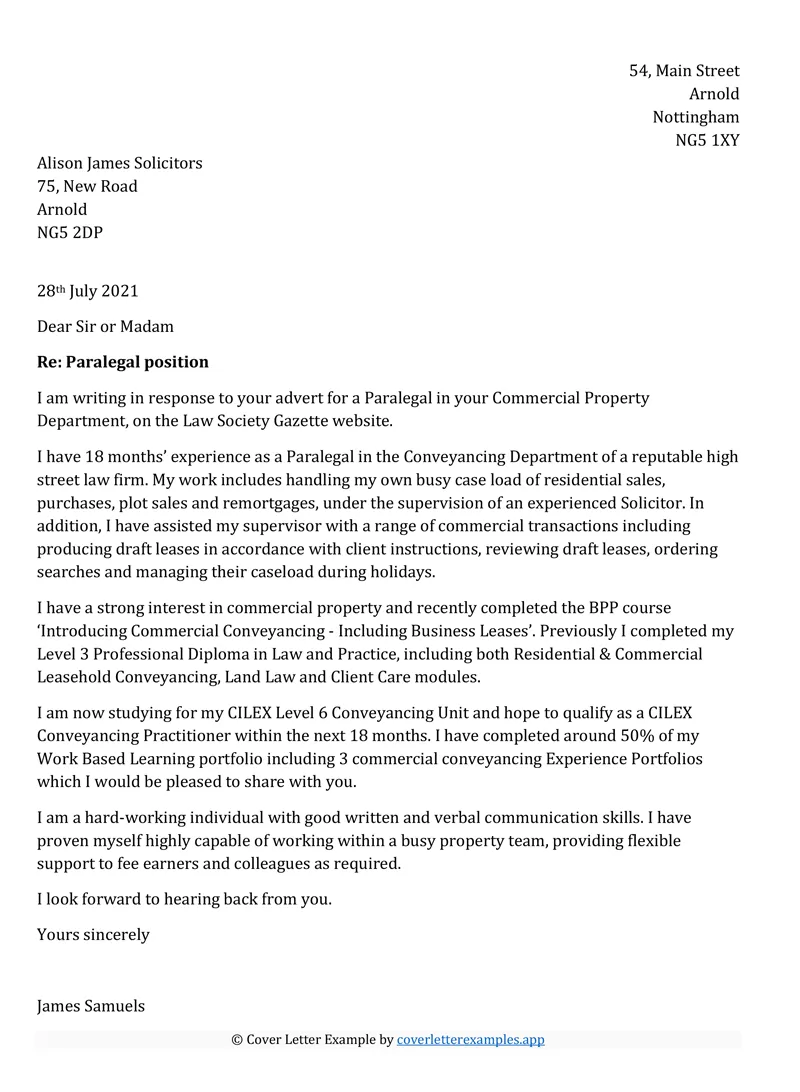What is a Paralegal Cover Letter
A paralegal cover letter is a crucial document that accompanies your resume when applying for paralegal positions. It serves as your introduction to a potential employer, providing an opportunity to showcase your skills, qualifications, and personality. Unlike a resume, which provides a factual summary of your experience, a cover letter allows you to explain why you’re a good fit for the specific role and the law firm or organization you’re applying to. It helps you make a strong first impression and can significantly increase your chances of getting an interview. The cover letter is your chance to show your enthusiasm for the position and demonstrate your understanding of the legal field. A well-written cover letter sets the stage for your application, highlighting the key aspects of your experience and skills that align with the job requirements.
Why You Need a Paralegal Cover Letter
In the competitive field of law, a cover letter is not just an optional extra; it’s a necessity. It’s your chance to distinguish yourself from other applicants and demonstrate your genuine interest in the position. A strong cover letter personalizes your application, showing that you’ve taken the time to understand the job requirements and the firm’s values. This level of effort makes you stand out and indicates your commitment to the opportunity. Recruiters often screen applications based on the cover letter, looking for candidates who articulate their skills clearly and express enthusiasm for the role. Without a cover letter, you risk being overlooked, especially if you’re applying for a position with no prior experience. The cover letter provides context for your resume and helps the hiring manager connect the dots between your skills and the needs of the firm. It’s your platform to showcase your communication skills and demonstrate your understanding of legal concepts and procedures.
Key Components of a Paralegal Cover Letter
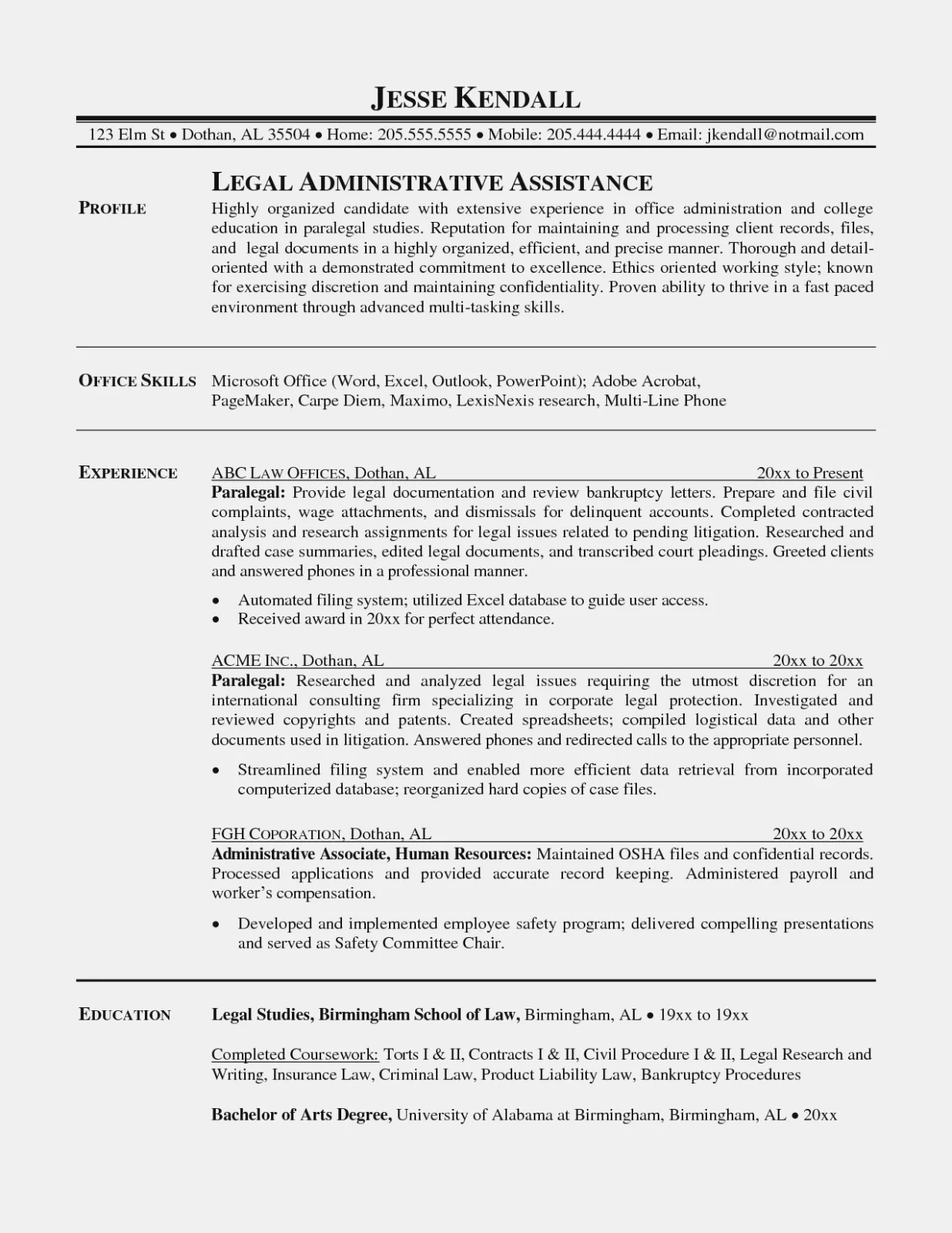
A well-structured cover letter consists of several essential components. These elements, when combined, present a cohesive and persuasive argument for why you are the ideal candidate. Each section serves a specific purpose in building a strong case for your candidacy, from introducing yourself to highlighting your skills and enthusiasm for the role. Paying attention to these components can substantially improve your application. These elements will ensure your cover letter is comprehensive and effectively communicates your qualifications and interest in the position. Let’s break down the key sections for building an outstanding paralegal cover letter, making sure you address each element thoroughly.
Your Contact Information and Date
Begin your cover letter by including your contact information in the upper-left corner. This should include your full name, address, phone number, and professional email address. Following this, place the date below your contact information. Make sure all details are accurate and up-to-date, as this is how the employer will contact you. Formatting this section correctly ensures that the employer can easily reach you if they are interested in moving forward with your application. Always double-check the information for any errors to avoid any issues during the hiring process. This simple step establishes professionalism and provides all the necessary details for potential communication.
The Recipient’s Information
Underneath the date, align the recipient’s information to the left. Start with the hiring manager’s name, title, the law firm’s name, and address. If you know the name of the hiring manager, addressing the letter to them is highly recommended. This personalizes your application and shows that you have taken the initiative to research the firm. If you are unsure, you can often find the hiring manager’s name on the company website or on LinkedIn. If you can’t find a specific name, use a professional title, such as ‘Hiring Manager’. Correct recipient information ensures your letter reaches the right person and demonstrates your attention to detail. Getting the name right demonstrates you care about the application and are willing to go the extra mile.
Professional Salutation
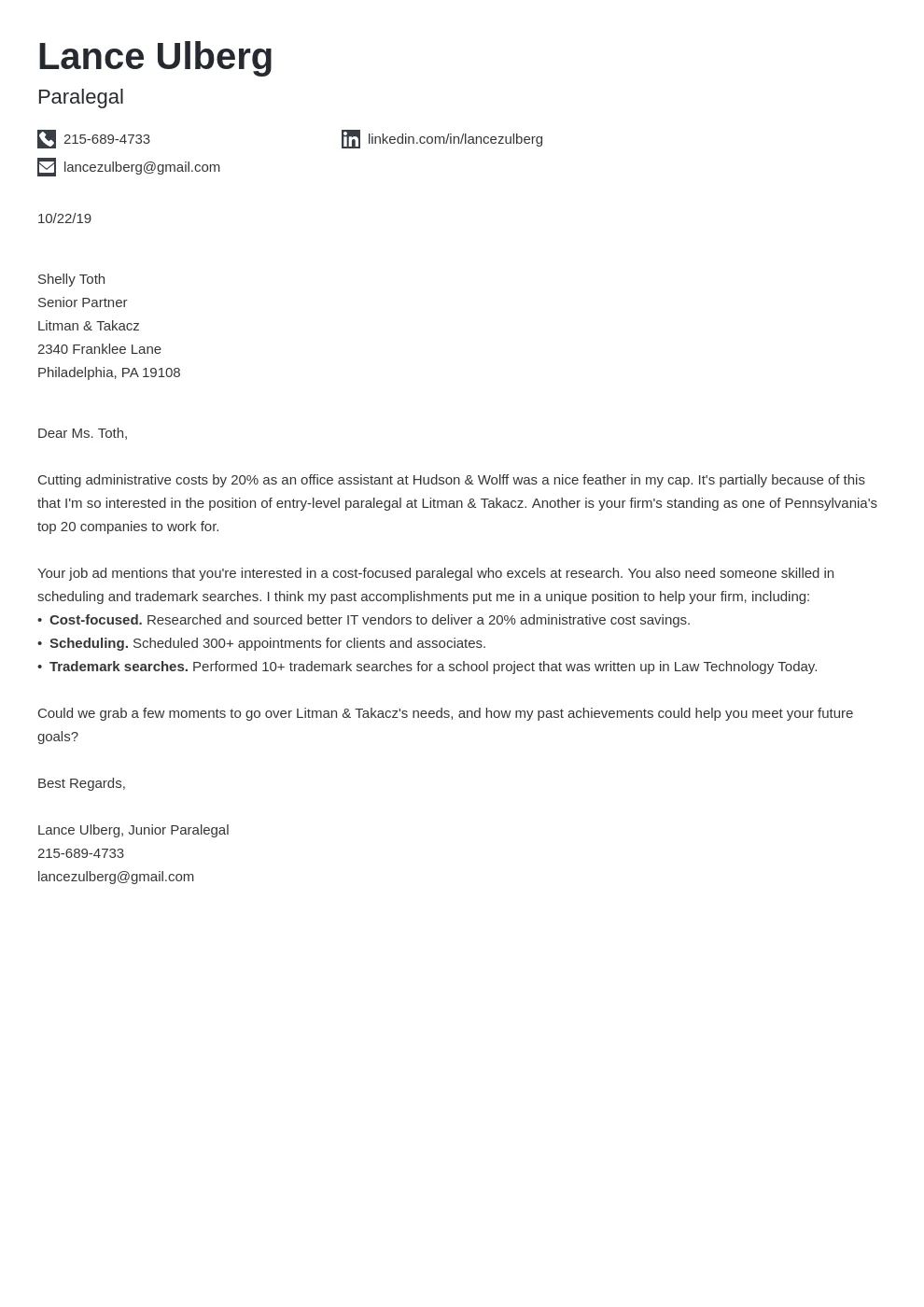
Start your letter with a professional salutation. ‘Dear Mr./Ms./Mx. [Last Name]’ is the standard and most effective choice if you know the hiring manager’s name. If the name is unavailable, use a general greeting such as ‘Dear Hiring Manager’ or ‘Dear [Law Firm Name] Hiring Team’. Avoid casual greetings like ‘Hi’ or ‘Hello’. A professional salutation sets a tone of respect and professionalism from the very beginning. Always double-check the spelling of the recipient’s name to avoid errors. This small detail can significantly impact the first impression you make with your cover letter. This is your first chance to present yourself in a professional light.
The Body of Your Paralegal Cover Letter
The body of your cover letter is the most crucial part, where you showcase your skills, qualifications, and enthusiasm for the position. It’s where you convince the employer that you are the right fit. Structure the body into well-defined paragraphs, each addressing a specific aspect of your suitability for the role. This is where you sell yourself effectively by connecting your background and skills with the job requirements. The goal is to keep the reader engaged and interested in your application. Be clear, concise, and compelling, focusing on what makes you a standout candidate and what you can bring to the firm. Ensure each paragraph has a clear purpose and contributes to the overall message.
Express Your Enthusiasm and Interest
Begin the body of your letter by expressing your enthusiasm for the position and the law firm. Briefly state where you found the job posting and why you are interested in the role. Show that you have researched the firm and are impressed by their work or reputation. Mention any specific aspects of the firm or the position that appeal to you. This demonstrates your genuine interest and sets a positive tone. This opening paragraph is the first impression and should capture the reader’s attention immediately. You want to show that you have carefully considered the role and the firm. This will make the hiring manager more interested in reading the rest of your letter. This initial enthusiasm is essential.
Highlight Relevant Skills
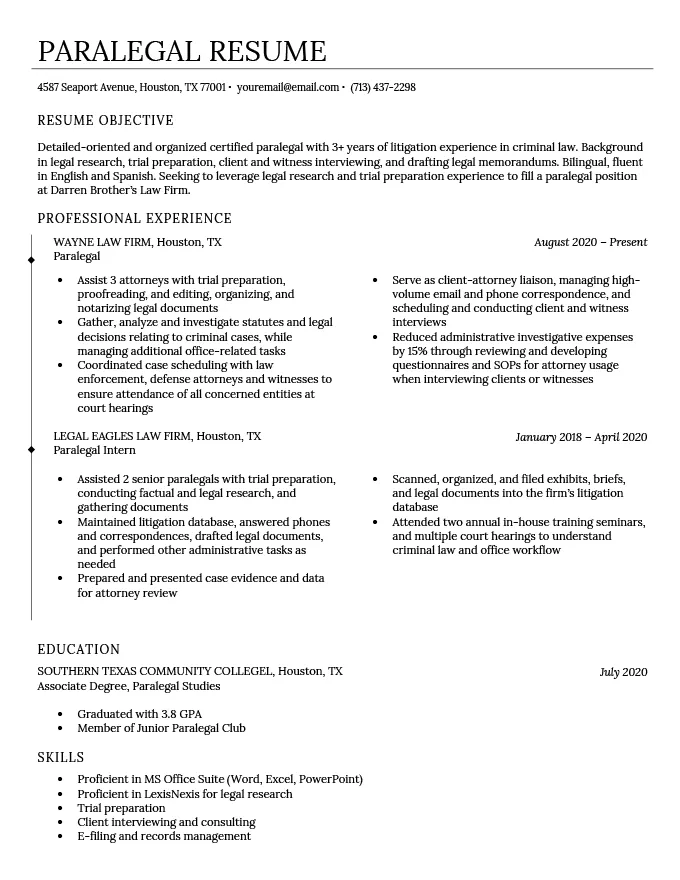
In the following paragraphs, highlight the skills and qualifications that align with the job description. Provide specific examples from your past experiences or coursework. For each skill, explain how you have used it to achieve a positive outcome. This is your opportunity to demonstrate your capabilities and prove that you can perform the job duties effectively. Quantify your accomplishments whenever possible. This can involve explaining the results of your work. This will give the hiring manager a clear picture of what you can do. Include examples of how you’ve managed projects, solved problems, or worked with others to accomplish goals. Back up your claims with concrete evidence. This will show your potential employer that you not only understand the job but also have a proven track record.
Address the No-Experience Factor
If you have no prior paralegal experience, this is an important section. Focus on your transferable skills and relevant coursework or training. Explain how your education and any other experiences have prepared you for the role. Demonstrate your willingness to learn and your commitment to succeeding in the position. Highlight any internships, volunteer work, or extracurricular activities that are related to law. Show that you have taken proactive steps to gain legal knowledge. Use this section to show that you’re a strong candidate. This section is an opportunity to be transparent about your lack of experience and turn it into a strength. Focus on the positive aspects of your background.
Focus on Transferable Skills
Transferable skills are those that you have developed in other jobs, education, or activities that can be applied to a paralegal role. Examples include strong communication, research, organizational, and analytical skills. Identify these skills and explain how they relate to the job requirements. Provide specific examples of how you have utilized these skills in the past. This is particularly important if you have no direct paralegal experience. Emphasize how these skills can contribute to your success as a paralegal. It showcases your adaptability and ability to perform the job effectively. By highlighting these skills, you demonstrate that you can fill the responsibilities of the role and learn quickly. Transferable skills demonstrate your broad capabilities.
Mention Relevant Coursework and Training
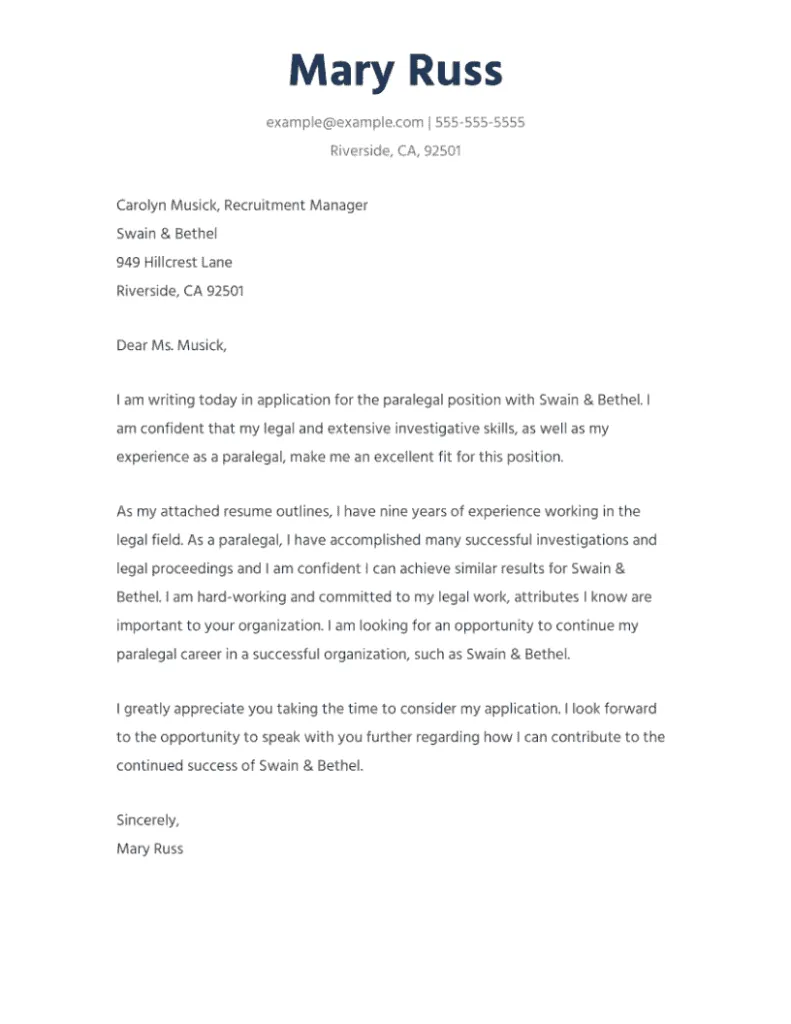
If you have completed paralegal coursework, a paralegal certificate program, or any legal training, be sure to mention it. Provide details about the courses you have taken, skills you have learned, and any specializations you have. If you have a degree in a related field, like legal studies or criminal justice, be sure to include that as well. If you are pursuing further education, state that. This helps to show your commitment to the legal field and your preparedness for the role. Provide specific details about what you have learned. Showcase your understanding of legal concepts and procedures. This will strengthen your application and make you a more appealing candidate. Provide relevant details from your education or training.
Showcase Your Soft Skills
Soft skills are non-technical abilities that are crucial in any professional setting. These include communication, teamwork, problem-solving, and time management. Incorporate examples of how you have used these skills in past situations to achieve positive results. Show how you can work collaboratively, manage your time effectively, and resolve problems efficiently. Mention how you communicate clearly and concisely. Illustrate your ability to work with clients or colleagues. Show how you handle pressure. Highlighting these abilities can make you stand out. These skills are incredibly valuable in a paralegal role. They will make the hiring manager consider you further.
Quantify Your Accomplishments (If Possible)
If possible, quantify your accomplishments. Use numbers, percentages, or specific results to demonstrate the impact of your work. For example, if you have experience in research, mention how you have conducted extensive legal research, resulting in a certain number of successful outcomes. Quantifiable achievements make your claims more credible and provide a clearer picture of your capabilities. This could include detailing the number of cases you have supported or any results achieved during your previous experiences. Including specific numbers adds credibility and demonstrates your impact on previous situations. Use data to illustrate your skills and achievements.
Closing Your Paralegal Cover Letter
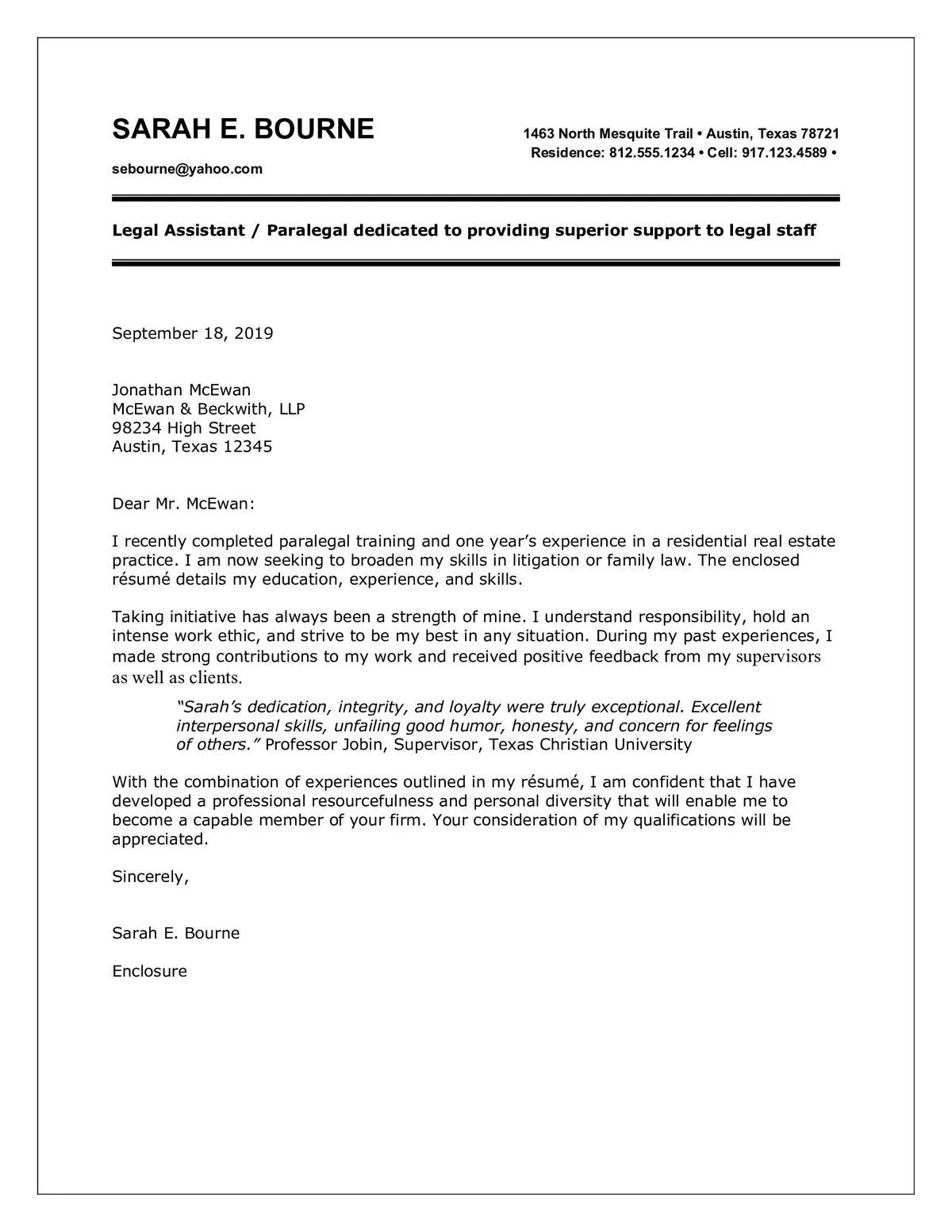
The closing of your cover letter is a crucial opportunity to reiterate your interest, express gratitude, and provide a clear call to action. It’s your final chance to reinforce why you’re the best candidate and to leave a positive impression on the hiring manager. A well-crafted closing leaves the reader with a sense of your enthusiasm and eagerness to contribute to the firm. This is also your chance to emphasize the importance of follow-up. Make the last lines of your letter count and set yourself apart from other applicants.
Express Gratitude and Call to Action
Begin the closing by expressing your gratitude for the reader’s time and consideration. Reiterate your enthusiasm for the position and restate your interest in the firm. Finish with a clear call to action, such as requesting an interview or stating your availability for a follow-up call. Make it easy for the hiring manager to take the next step by providing clear instructions. This is a professional way to conclude your cover letter. It demonstrates respect for the hiring manager’s time. Expressing gratitude and taking action will increase your chances of being considered. Provide a clear next step.
Professional Closing and Signature
Use a professional closing such as ‘Sincerely’ or ‘Best regards’. Leave space for your handwritten signature if you are submitting a printed copy. If you are submitting an electronic copy, type your full name below the closing. Ensure your signature is clear and legible. Your name should be clearly typed to make it easy for the hiring manager to identify you. This finalizes your letter and ensures a professional presentation. It is a small detail but it adds to the overall polish of your application. This will complete your letter and make it easy to review.
Proofreading and Formatting Tips
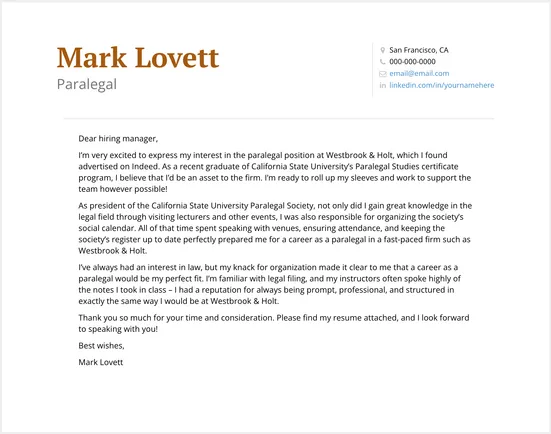
Before submitting your cover letter, it’s essential to proofread it thoroughly and format it correctly. Errors in grammar, spelling, or formatting can damage your credibility and decrease your chances of getting an interview. Taking the time to polish your letter demonstrates attention to detail and professionalism. This is especially true in the legal field, where accuracy is paramount. Proper proofreading and formatting significantly improve your cover letter. Always proofread and format your cover letter for the best results. Proofreading can often be the difference between getting an interview and being overlooked.
Format Your Paralegal Cover Letter Correctly
Use a standard, easy-to-read font such as Times New Roman or Arial, and keep the font size between 10 and 12 points. Set margins to one inch on all sides. Ensure the text is left-aligned. Use single spacing within paragraphs and double spacing between paragraphs. Break up long blocks of text to improve readability. Keep the letter concise, ideally no more than one page in length. Maintain a professional tone throughout the letter. Avoid using overly complex language. This will make your letter easier to read and more appealing to the hiring manager. Correct formatting makes your letter easier to read.
Proofread for Errors
Carefully proofread your cover letter for any errors in grammar, spelling, and punctuation. Read your letter aloud to catch any awkward phrasing or mistakes. Ask a friend, family member, or career advisor to review your cover letter for you. It’s always helpful to have another set of eyes look at it. Ensure that the contact information is accurate and up-to-date. Check all names and titles for correct spelling. Double-check the firm’s name and address. This meticulous attention to detail will show the employer your commitment to excellence. It will make your application stand out from the crowd. Never submit an application with errors.
Paralegal Cover Letter Examples
Reviewing paralegal cover letter examples can provide valuable insights into effective cover letter writing. By analyzing different examples, you can identify best practices, learn how to structure your letter, and gain inspiration for your own. Examples offer a practical guide to what works and what to avoid. You can find various examples online and tailor them to fit your own skills. These examples provide a framework for you to follow. Use them to tailor your skills and expertise to the specific job requirements. This will make it easier for you to compose your cover letter and present yourself effectively.
Example Cover Letter for Paralegal with No Experience
When you lack experience, your cover letter must emphasize your other qualities and potential. This should showcase your passion for the legal field and your relevant skills and educational background. Your cover letter is an opportunity to highlight your transferable skills and express your eagerness to learn. Provide concrete examples of your accomplishments. You should explain how your skills can contribute to the role. Personalize your letter to the specific job requirements and the firm’s values. You can find templates and examples that can guide you. Remember to customize your letter to suit your particular situation. This will make a good impression on any hiring manager. This will allow you to stand out from the competition.
Adapt the Example to Your Situation
While examples can serve as a useful starting point, always adapt them to your specific situation. Customize the letter to reflect your skills, experiences, and the specific job requirements. Do not use a generic template. Change the language to reflect your personality. Add your unique experiences and accomplishments. Personalization will show the employer that you have taken the time to understand the role and are a good fit. Tailoring the example to your individual needs is vital. Customizing the example makes the letter more genuine. This will make you stand out from the other applicants. Adapt the example for the best results.
Common Mistakes to Avoid
Avoid certain common mistakes that can damage your cover letter and decrease your chances of getting an interview. These mistakes often stem from a lack of attention to detail or a misunderstanding of the purpose of the cover letter. Being aware of these pitfalls can help you avoid them and create a more effective application. Make sure you understand what to avoid. A well-crafted cover letter can significantly increase your chance of getting an interview. You should be aware of some of the most common mistakes.
Generic Cover Letters
Avoid using generic cover letters that are not tailored to the specific job or the law firm. Generic letters indicate a lack of effort and a lack of genuine interest in the position. Always research the firm and customize your letter to address the specific requirements. Highlight how your skills and experience align with the job. A generic letter gives a negative impression. Take the time to personalize the letter. Personalize your letter to make a better impression. Your letter needs to be unique.
Typos and Grammatical Errors
Typos and grammatical errors can immediately undermine your credibility. These mistakes indicate a lack of attention to detail and professionalism. Before submitting your cover letter, thoroughly proofread it and ask someone else to review it as well. Use spell check and grammar check tools to catch potential errors. Avoid mistakes that could be easily avoided. A flawless cover letter shows your commitment to accuracy and professionalism. It will make you appear more appealing as a potential candidate. Ensure your cover letter is free of errors.
Lack of Personalization
Failing to personalize your cover letter is a significant mistake. Customize the letter to the specific job and the firm. Personalize the letter to demonstrate your research and your enthusiasm. Demonstrate your specific interest in the company and the position. Mentioning the firm’s work or specific aspects of the role shows you are genuinely interested. Make the content unique to the employer and the specific job requirements. Taking the time to personalize your cover letter makes your application more effective. The hiring manager will realize that the cover letter is meant for them. Personalize your application for the best results.
Submitting Your Paralegal Cover Letter
The way you submit your cover letter and resume can significantly influence your application. Following the instructions provided in the job posting or on the company website is crucial. The application process and method of submission can affect how the employer views your application. Making sure to follow all of the instructions increases your chance of success. Ensuring that all the requirements are met is crucial for any successful application. The application process often influences the first impression. Let’s look at the two most common methods of submission and how to manage the process.
Sending via Email
If submitting via email, save your cover letter and resume as PDF files. This ensures that the formatting remains consistent. Use a clear and professional subject line for your email. Customize the email body with a brief message. Reiterate your interest in the position and mention that your resume and cover letter are attached. Make sure the attachments are clearly labeled with your name and the job title. This will help the hiring manager easily identify your application. Double-check everything before sending to avoid any issues. Sending a professional email makes you look good. Make sure the email is professional.
Submitting Online Applications
When submitting applications online, carefully follow all instructions provided on the application portal. Upload your cover letter and resume in the format requested. Sometimes the system may require you to copy and paste the cover letter text into a designated field. Tailor your content based on the online application requirements. Make sure the format is correct. Review everything before submission. Double check all your information, including your contact information. Review all of the details. Make sure that everything is correct. Following all the instructions will increase your chances of being considered. Make sure you follow all directions.
